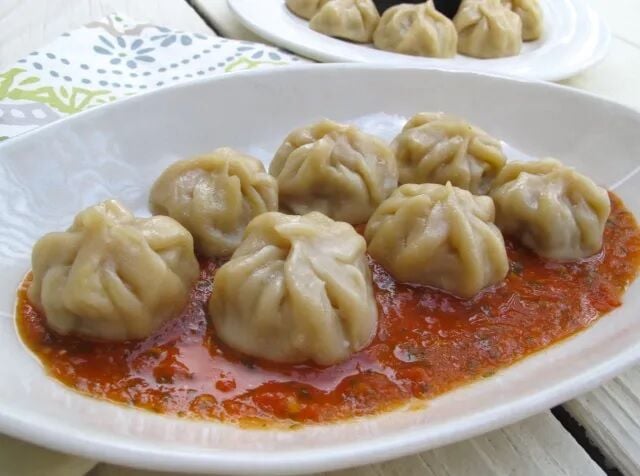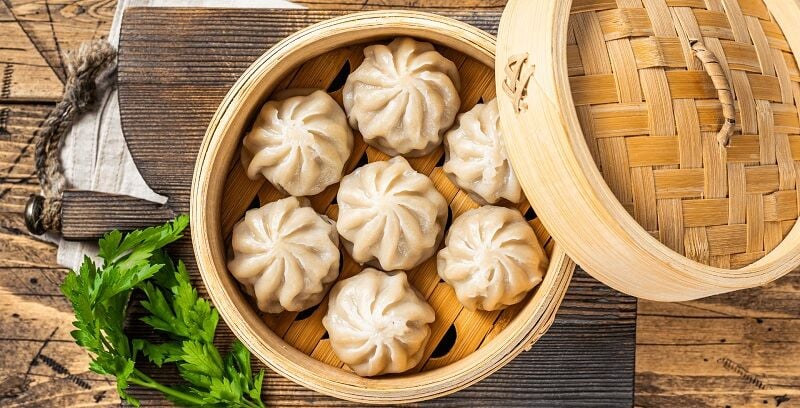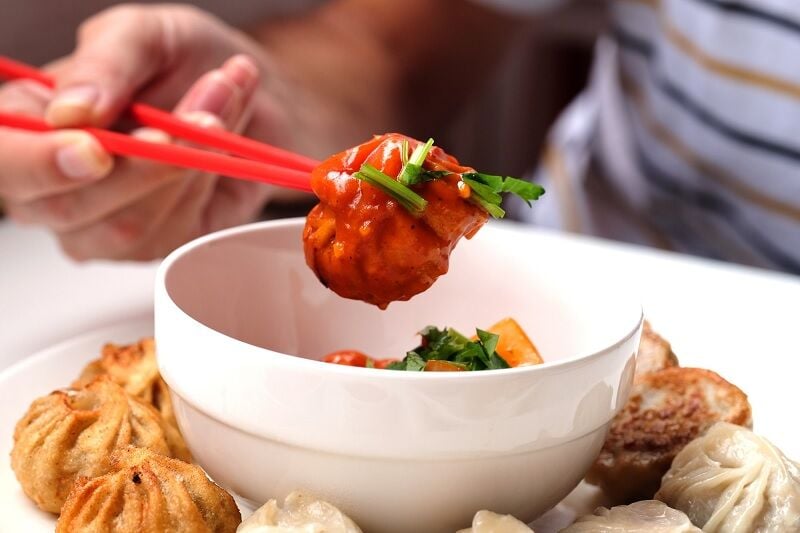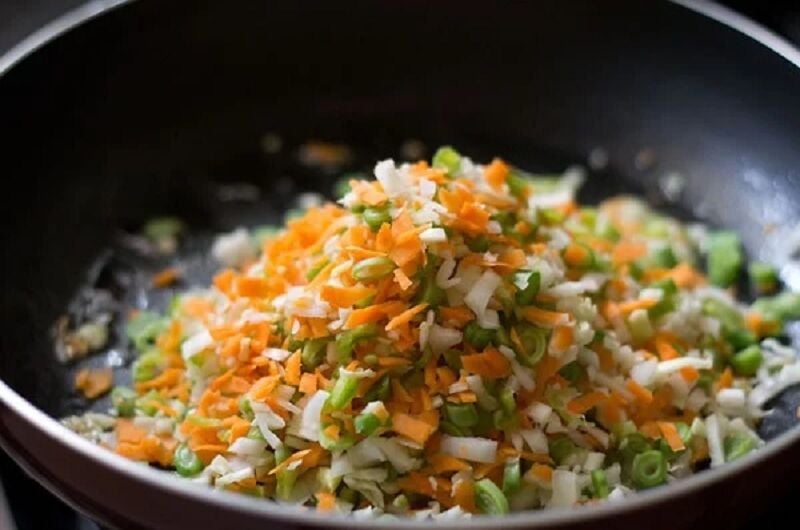Nepalese momos versus Thai dumplings

If you harbour a vested interest in these diminutive gastronomic delights, the forthcoming exploration pledges considerable gratification. We are about to embark on a comprehensive study of the Nepalese Momo and Thai dumplings, two quintessential dishes that have bewitched connoisseurs worldwide.
Originally from Nepal, the Momo represents a unique variety of steamed dumplings endowed with a flexible filling, thus allowing for a plethora of customisation possibilities. Its distinct characteristic lies in the vibrantly robust homemade tomato chutney, referred to as Achaar, which traditionally augments the dish. On the contrary, Thai dumplings offer a dissimilar yet equally mesmerising culinary experience, imbued with their distinct tastes and accentuated by their specific dipping sauces.
Overview of Nepalese momos and Thai dumplings

Lift the lid off the enchanting world of dumpling delights that hail from Nepal and Thailand in this journey through the culinary landscape. You will unravel the contrasting yet uniquely tantalising flavours of Nepalese Momo and Thai dumplings.
Historical context
Nepalese Momos catalyse a stroll down the memory lanes of Nepal’s rich ancient history. Influences from the Tibetan plateau are evident in the making of these dumplings. Momos define their uniqueness through their mouth-watering stuffings and accompaniments, namely, the piquant achar, forged through the marriage of tomatoes with a medley of aromatic spices and heat-induced fenugreek seeds.
Mimicking this, Thai dumplings extend you an inviting glimpse into Thailand’s ancient culinary traditions. Unlike the steamed momos, Thai dumplings encapsulate a vivid range of cooking techniques – offering baked, fried, and steamed versions suiting diverse palates.
Cultural significance
Intriguingly, momos are not just a simple Nepalese dish. They’re an integral part of the country’s cultural fabric. Bursting with delectable flavours coupled with the sheer convenience of consumption, momos enjoy the stature of being Nepal’s beloved street food. The preparation of momos, particularly during festivals, represents community building and cherishing the precious moments life bestows.
The cultural stance is similar to Thai dumplings, revered as a symbol of good fortune and prosperity. Traditionally, Thai dumplings are dished out during the Lunar New Year, signifying wealth and good luck. Commonly savoured as a traditional breakfast, these dumplings amplify the culinary scene’s diversity. By drawing contrasts between Nepalese momos versus Thai dumplings, one can appreciate the unique culinary techniques and profound cultural significance embodied by each.
Key ingredients in momos and Thai dumplings

As you delve further into the world of Nepalese Momos and Thai dumplings, understanding the key ingredients forms a vital part. Lending the unique flavour profiles and textures, these ingredients vary from common to unique in each type of dumpling.
Common ingredients
Both Nepalese Momos and Thai dumplings rely on a few staple ingredients, laying the groundwork for their respective fillings. Predominately, you will find a protein source such as chicken or pork.
As stated in the Nepal cookbook and other authoritative cuisine journals, each dumpling incorporates a mixture of aromatic herbs and spices. For instance, you will observe the frequent use of ingredients such as garlic and ginger. Both types of dumplings also call for a variety of onions, from red to spring onions. Chilli powder often makes its way into the recipes for an added kick of spice.
Unique ingredients
While similarities exist, the uniqueness of Nepalese Momos and Thai dumplings lies in their individual extra ingredients. Nepalese Momos, for example, require ingredients like fenugreek seeds and cilantro, typically served with a fiery tomato-cilantro chutney as mentioned in The Nepal Cookbook.
In comparison, Thai dumplings have unique ingredients such as Szechuan peppercorns and tinned tomatoes. They are traditionally accompanied by a distinct Thai chilli sauce, adding an extra punch to the dumpling experience.
In the culinary journey of Nepalese Momos versus Thai dumplings, these ingredients play a pivotal role in shaping the very identity of each dumpling type. The use of these common and unique ingredients not only epitomises the taste but also encapsulates the culture and history of their respective regions.
Preparation techniques

Shifting gears from the cultural importance and key ingredients of Nepalese momos and Thai dumplings, we now proceed towards the crucial subject of preparing these delightful dumplings. This part of the process cherishes its own sense of art and culture, setting each dumpling apart not just in flavour but also in visual presentation.
Making the wrappers
Primarily for Nepalese momos, the process starts with preheating the oven to 450 degrees, and afterwards, placing tomatoes upside down in a ceramic or non-reactive baking dish to bake for precisely 30 minutes. Midway through the baking process, at the 15-minute point, peeled cloves of garlic are tossed in with the tomatoes. It’s important to release hot steam in between pulses when blending hot ingredients.
In the case of other dumpling types, a different technique is used. For instance, creating dumpling wrappers requires a mix of flour, salt, and water to mould an elastic dough. The dough is left to settle for approximately 20 minutes, post which it’s rolled out into a sausage shape. It is then neatly divided into 1-inch chunks. Using a rolling pin, each chunk is made into circular wrappers, ready to be stuffed with fillings.
Crafting the fillings
For Nepalese momos, the cooked tomatoes and garlic are removed from the oven and once cool, transferred to a blender. Additions to the blender include ginger, lemon juice, cilantro, chilli powder, pepper, and salt. The aim is to pulse until the ginger and garlic are well broken down, and then blend the mixture until it achieves a seamless consistency.
On the other hand, Thai dumpling fillings consist of ingredients such as minced chicken breast, finely chopped celery and spring onions, minced garlic cloves, chilli powder, ground cumin, salt, and olive oil. After combining these ingredients, you end up with a rich and flavorful filling for the dumplings.
In both cases, the crafting of fillings requires precision and careful mixing of ingredients, due to which it’s suggested this process be carried out by at least two people. While one rolls out the dough and shapes the wrappers, the other meticulously prepares and places the fillings.
Want to know more about Traditional Thai desserts you must try them. If you’re coming to Thailand to try some authentic Thai desserts, these are some treats that are significant in Thailand. Thailand’s rich culinary tradition extends to its desserts, which are a delightful blend of flavours, textures, and colours. Here are some must-try traditional Thai desserts that showcase the best of Thai sweets.
Latest Thailand News
Follow The Thaiger on Google News:


























